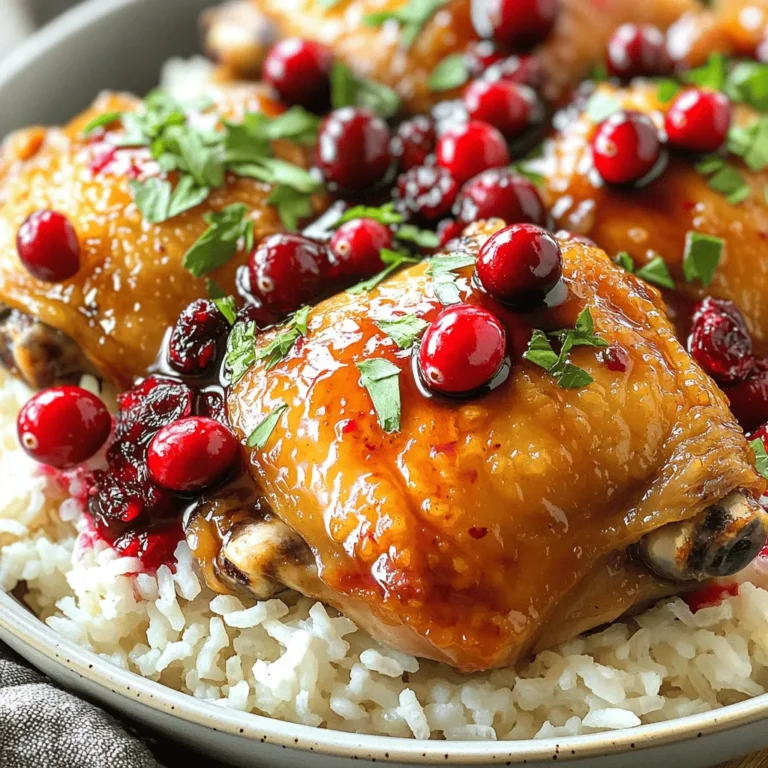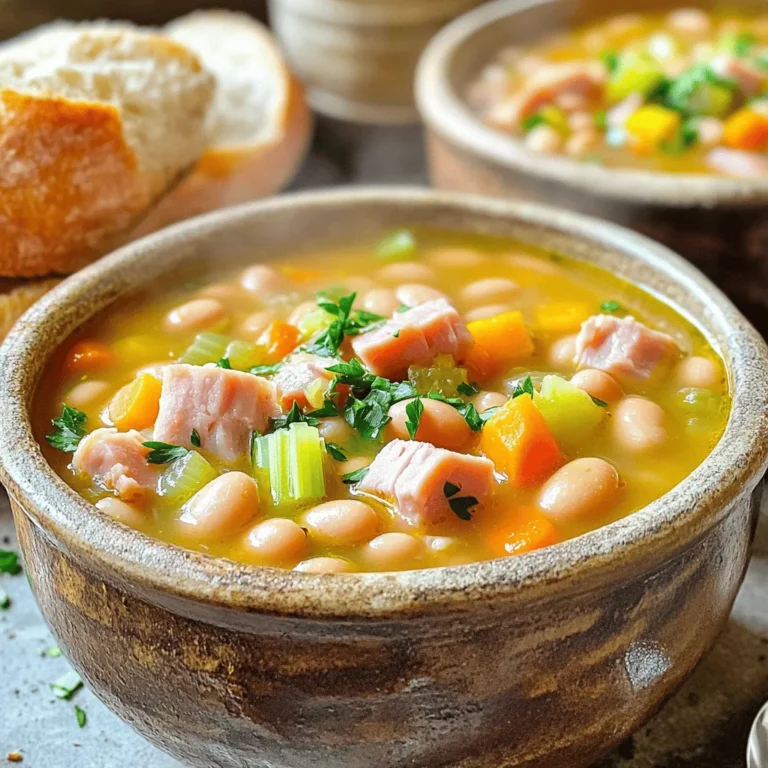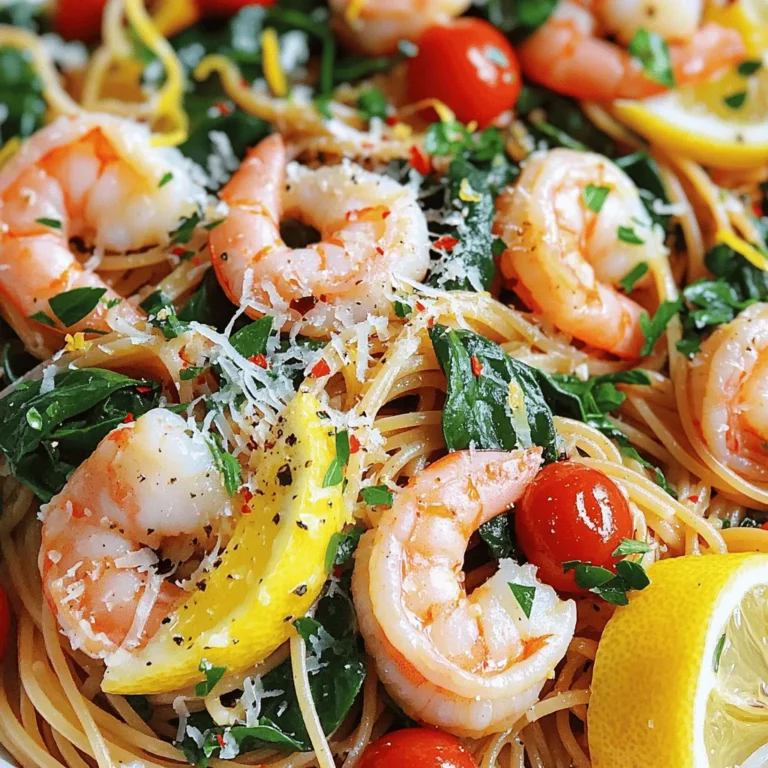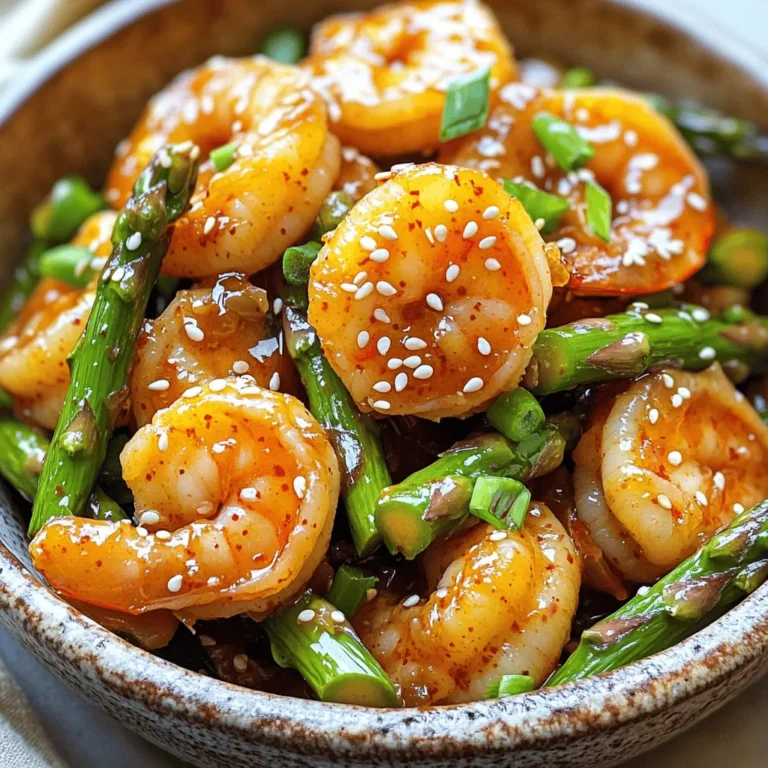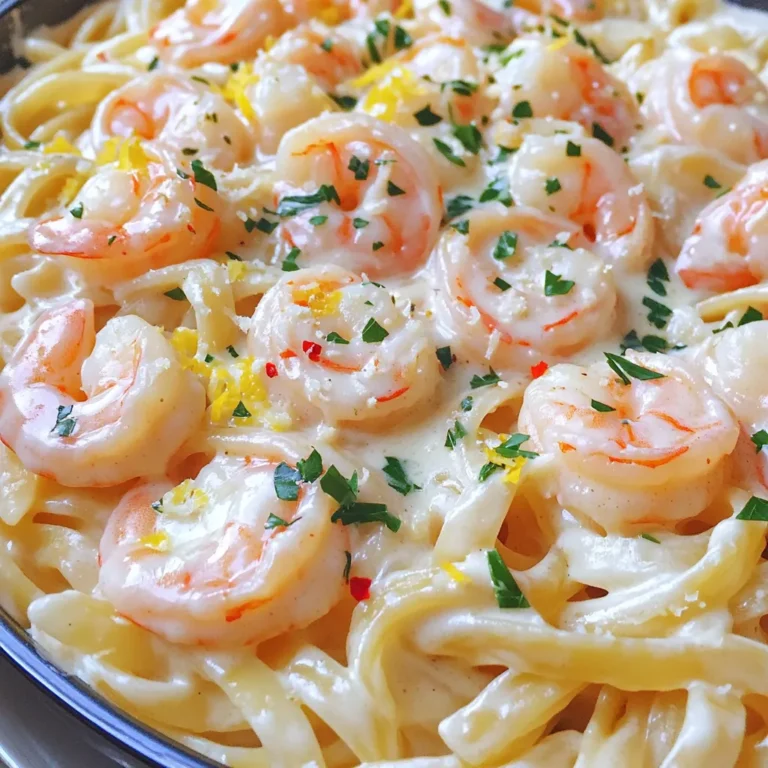Gochujang Carbonara Flavorful Spicy Twist Recipe
![- 8 oz spaghetti or fettuccine - 3 large egg yolks - 1 whole egg - 1/2 cup finely grated Parmesan cheese - 1 tablespoon gochujang - 2 cloves garlic, minced - 1 tablespoon olive oil - 4 oz pancetta or diced turkey bacon (optional) - Salt and freshly cracked black pepper - Chopped green onions (for garnish) - Sesame seeds (for garnish) Gather these ingredients before you start cooking. This will make your process smooth and fun. The star of this dish is gochujang. It adds a deep heat and unique flavor. The creamy sauce comes from the eggs and cheese. The garlic and olive oil offer a nice aroma. If you want a meat option, use pancetta or turkey bacon. - Large pot - Medium mixing bowl - Large skillet - Tongs You need a large pot to boil the pasta. A medium mixing bowl helps mix the egg and cheese. The large skillet cooks the garlic and meat. Tongs are key to tossing your pasta with the sauce. Having the right tools makes cooking easier and more enjoyable. - Calories per serving: about 500 - Protein: 20g - Fat: 25g - Carbohydrates: 50g This dish is rich and filling. The calories come from the pasta, eggs, and cheese. It packs a good protein punch from the eggs and cheese. Enjoy it as a main meal or share it with a friend. For more details, check the Full Recipe for serving sizes and more tips. - Bring a large pot of salted water to a boil. - Cook spaghetti or fettuccine until al dente, about 8-10 minutes. First, salt the water. This helps the pasta taste great. When it boils, add the pasta. Stir it often. Before draining, save one cup of pasta water. This water helps make the sauce creamy later. - Whisk together egg yolks, whole egg, Parmesan, gochujang, and seasonings. - Heat olive oil and sauté garlic. In a medium bowl, mix the egg yolks, whole egg, and finely grated Parmesan cheese. Add gochujang and a pinch of salt and pepper. Whisk until it looks smooth. Heat olive oil in a skillet over medium heat. Add minced garlic. Sauté it for about 30 seconds. Watch for it to smell great and turn golden. - Cook pancetta or turkey bacon if using. - Toss drained pasta with garlic oil. - Mix in egg and gochujang mixture off the heat. If you want meat, add pancetta or turkey bacon now. Cook it until it is crispy, about 3-4 minutes. Then, toss the drained pasta into the skillet. Mix it well with the garlic oil. Off the heat, pour the egg and gochujang mixture over the hot pasta. Use tongs to toss it. The heat will cook the eggs gently, making a creamy sauce. Slowly add the reserved pasta water until the sauce is creamy and smooth. Taste and add more salt or pepper if you need to. Plate your Gochujang Carbonara right away. Enjoy the spicy twist! For the full recipe, check out the detailed steps and tips. To achieve a creamy sauce, start with room temperature eggs. Cold eggs can make the sauce clumpy. Whisk the yolks and the whole egg together well. This creates a smooth base. When you combine the egg mixture with the pasta, do it off the heat. The pasta should be hot enough to cook the eggs gently. Toss quickly with tongs. This helps make a rich sauce. If your sauce feels too thick, use reserved pasta water. Add it a little at a time. This water adds starch and helps to loosen the sauce. Keep tossing until you reach your desired creaminess. To boost the flavor, try adding spices. A pinch of red pepper flakes can add heat. Fresh herbs like parsley or basil can bring brightness. These small changes can really lift your dish. You can also experiment with different cheese. Pecorino Romano adds a sharp flavor. A mix of Parmesan and Pecorino can give you a nice depth. Use what you like best for a personal touch. One big mistake is overcooking the pasta. Al dente is best, as it will cook a bit more in the sauce. Always check the package time and taste a strand. Another mistake is scrambling the eggs. Keep the heat low when mixing the egg and pasta. If the skillet is too hot, the eggs will cook too fast. You want a creamy sauce, not scrambled eggs. {{image_4}} You can make a great vegetarian version of gochujang carbonara. Start by replacing the pancetta. Use mushrooms instead. They add a nice umami flavor. You can use shiitake or cremini mushrooms for this. Just sauté them in olive oil until they are golden and tender. Next, add seasonal vegetables. Think spinach, zucchini, or asparagus. They brighten up the dish and add color. Just toss them in the skillet with the garlic. This adds flavor and nutrition. Want more heat? You can increase the gochujang. Adding a little more will make it extra spicy. Just be careful! Start small and taste as you go. If you want to add other spices, try crushed red pepper flakes. They bring another layer of heat and flavor. Do you need a gluten-free option? You can easily swap out regular pasta for gluten-free pasta. There are many good brands available now. They work well in this recipe. You can also explore other noodle types. Try rice noodles or soba noodles. Each option gives a unique twist to the dish. They can bring different textures and flavors, making it fun to try new things. To keep your Gochujang Carbonara fresh, store it in an airtight container. Place the container in the fridge. Make sure to cool the pasta to room temperature before sealing. This helps prevent moisture buildup. Leftovers last about 3 days in the fridge. The best way to reheat carbonara is on the stove. Add a splash of water or broth to a skillet. Heat it over low to medium heat. Stir gently until warm. This keeps the sauce creamy and smooth. Avoid using the microwave, as it can dry out the pasta. You can freeze carbonara, but it may change texture. To freeze, place cooled portions in freezer-safe bags. Remove as much air as possible before sealing. For best taste, eat it within 1 month. When ready to eat, thaw it in the fridge overnight. Reheat gently on the stove with added liquid. This helps restore some of the creaminess. For the full recipe, check out the details above. Gochujang is a Korean chili paste. It has a deep red color. This paste is made from fermented soybeans, glutinous rice, and chili powder. Its flavor is sweet, spicy, and umami-rich. Gochujang adds a unique kick to many dishes. You can find it in Asian markets and some grocery stores. Yes, you can prep this dish ahead of time. Cook the pasta and store it in the fridge. Keep the sauce separate, so it stays creamy. When you are ready to eat, heat the pasta and mix in the sauce. This way, you enjoy fresh, tasty carbonara. If you lack pancetta, try turkey bacon or diced ham. For a vegetarian option, use mushrooms. Sauté them until golden and add them to the dish. You can also use smoked tofu for a plant-based protein. To make it milder, use less gochujang. You can start with half a tablespoon and taste it. If you want more heat, add a little more gochujang or some red pepper flakes. Adjust slowly until it meets your preference. For the complete steps and extra tips for making Gochujang Carbonara, click here: [Full Recipe]. This blog post covered how to make Gochujang Carbonara, from ingredients to storage tips. You learned about choosing the right pasta, creating a creamy sauce, and avoiding common cooking mistakes. No matter your taste, you can try variations like vegetarian options. Always store leftovers correctly to enjoy them later. Remember, cooking is fun, so feel free to experiment with flavors! Enjoy your delicious meal and impress others with your skills!](https://fastmealmate.com/wp-content/uploads/2025/06/8ba01260-66cf-4de4-8766-bae4801448e1.webp)
Want to spice up your dinner routine? Try my Gochujang Carbonara for a flavorful twist! This dish pairs the creamy Italian classic with the bold heat of Korean gochujang. You’ll enjoy a simple method and easy-to-find ingredients that create a fun fusion of flavors. Ready to impress your taste buds? Let’s dive into this spicy recipe that’s sure to become a new favorite!
Ingredients
List of Ingredients
– 8 oz spaghetti or fettuccine
– 3 large egg yolks
– 1 whole egg
– 1/2 cup finely grated Parmesan cheese
– 1 tablespoon gochujang
– 2 cloves garlic, minced
– 1 tablespoon olive oil
– 4 oz pancetta or diced turkey bacon (optional)
– Salt and freshly cracked black pepper
– Chopped green onions (for garnish)
– Sesame seeds (for garnish)
Gather these ingredients before you start cooking. This will make your process smooth and fun. The star of this dish is gochujang. It adds a deep heat and unique flavor. The creamy sauce comes from the eggs and cheese. The garlic and olive oil offer a nice aroma. If you want a meat option, use pancetta or turkey bacon.
Cooking Equipment
– Large pot
– Medium mixing bowl
– Large skillet
– Tongs
You need a large pot to boil the pasta. A medium mixing bowl helps mix the egg and cheese. The large skillet cooks the garlic and meat. Tongs are key to tossing your pasta with the sauce. Having the right tools makes cooking easier and more enjoyable.
Nutritional Information
– Calories per serving: about 500
– Protein: 20g
– Fat: 25g
– Carbohydrates: 50g
This dish is rich and filling. The calories come from the pasta, eggs, and cheese. It packs a good protein punch from the eggs and cheese. Enjoy it as a main meal or share it with a friend.
Step-by-Step Instructions
Cooking the Pasta
– Bring a large pot of salted water to a boil.
– Cook spaghetti or fettuccine until al dente, about 8-10 minutes.
First, salt the water. This helps the pasta taste great. When it boils, add the pasta. Stir it often. Before draining, save one cup of pasta water. This water helps make the sauce creamy later.
Preparing the Sauce
– Whisk together egg yolks, whole egg, Parmesan, gochujang, and seasonings.
– Heat olive oil and sauté garlic.
In a medium bowl, mix the egg yolks, whole egg, and finely grated Parmesan cheese. Add gochujang and a pinch of salt and pepper. Whisk until it looks smooth. Heat olive oil in a skillet over medium heat. Add minced garlic. Sauté it for about 30 seconds. Watch for it to smell great and turn golden.
Combining Ingredients
– Cook pancetta or turkey bacon if using.
– Toss drained pasta with garlic oil.
– Mix in egg and gochujang mixture off the heat.
If you want meat, add pancetta or turkey bacon now. Cook it until it is crispy, about 3-4 minutes. Then, toss the drained pasta into the skillet. Mix it well with the garlic oil. Off the heat, pour the egg and gochujang mixture over the hot pasta. Use tongs to toss it. The heat will cook the eggs gently, making a creamy sauce. Slowly add the reserved pasta water until the sauce is creamy and smooth. Taste and add more salt or pepper if you need to.
Plate your Gochujang Carbonara right away. Enjoy the spicy twist!
Tips & Tricks
Perfecting the Carbonara Texture
To achieve a creamy sauce, start with room temperature eggs. Cold eggs can make the sauce clumpy. Whisk the yolks and the whole egg together well. This creates a smooth base.
When you combine the egg mixture with the pasta, do it off the heat. The pasta should be hot enough to cook the eggs gently. Toss quickly with tongs. This helps make a rich sauce.
If your sauce feels too thick, use reserved pasta water. Add it a little at a time. This water adds starch and helps to loosen the sauce. Keep tossing until you reach your desired creaminess.
Flavor Enhancements
To boost the flavor, try adding spices. A pinch of red pepper flakes can add heat. Fresh herbs like parsley or basil can bring brightness. These small changes can really lift your dish.
You can also experiment with different cheese. Pecorino Romano adds a sharp flavor. A mix of Parmesan and Pecorino can give you a nice depth. Use what you like best for a personal touch.
Common Mistakes to Avoid
One big mistake is overcooking the pasta. Al dente is best, as it will cook a bit more in the sauce. Always check the package time and taste a strand.
Another mistake is scrambling the eggs. Keep the heat low when mixing the egg and pasta. If the skillet is too hot, the eggs will cook too fast. You want a creamy sauce, not scrambled eggs.
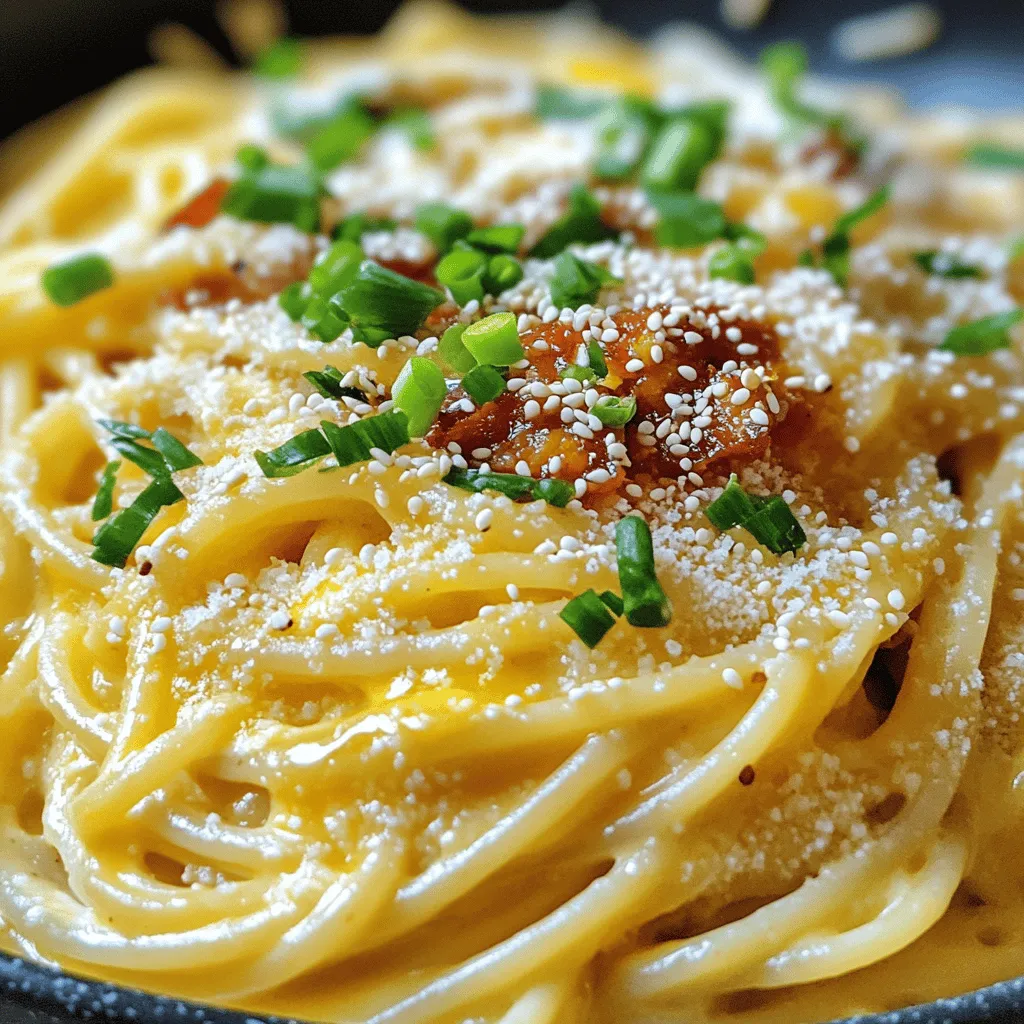
Variations
Vegetarian Gochujang Carbonara
You can make a great vegetarian version of gochujang carbonara. Start by replacing the pancetta. Use mushrooms instead. They add a nice umami flavor. You can use shiitake or cremini mushrooms for this. Just sauté them in olive oil until they are golden and tender.
Next, add seasonal vegetables. Think spinach, zucchini, or asparagus. They brighten up the dish and add color. Just toss them in the skillet with the garlic. This adds flavor and nutrition.
Spicing it Up
Want more heat? You can increase the gochujang. Adding a little more will make it extra spicy. Just be careful! Start small and taste as you go. If you want to add other spices, try crushed red pepper flakes. They bring another layer of heat and flavor.
Alternative Pasta Options
Do you need a gluten-free option? You can easily swap out regular pasta for gluten-free pasta. There are many good brands available now. They work well in this recipe.
You can also explore other noodle types. Try rice noodles or soba noodles. Each option gives a unique twist to the dish. They can bring different textures and flavors, making it fun to try new things.
Storage Info
Storing Leftovers
To keep your Gochujang Carbonara fresh, store it in an airtight container. Place the container in the fridge. Make sure to cool the pasta to room temperature before sealing. This helps prevent moisture buildup. Leftovers last about 3 days in the fridge.
Reheating Instructions
The best way to reheat carbonara is on the stove. Add a splash of water or broth to a skillet. Heat it over low to medium heat. Stir gently until warm. This keeps the sauce creamy and smooth. Avoid using the microwave, as it can dry out the pasta.
Freezing Carbonara
You can freeze carbonara, but it may change texture. To freeze, place cooled portions in freezer-safe bags. Remove as much air as possible before sealing. For best taste, eat it within 1 month. When ready to eat, thaw it in the fridge overnight. Reheat gently on the stove with added liquid. This helps restore some of the creaminess.
FAQs
What is Gochujang?
Gochujang is a Korean chili paste. It has a deep red color. This paste is made from fermented soybeans, glutinous rice, and chili powder. Its flavor is sweet, spicy, and umami-rich. Gochujang adds a unique kick to many dishes. You can find it in Asian markets and some grocery stores.
Can I make this dish in advance?
Yes, you can prep this dish ahead of time. Cook the pasta and store it in the fridge. Keep the sauce separate, so it stays creamy. When you are ready to eat, heat the pasta and mix in the sauce. This way, you enjoy fresh, tasty carbonara.
What can I substitute if I don’t have pancetta?
If you lack pancetta, try turkey bacon or diced ham. For a vegetarian option, use mushrooms. Sauté them until golden and add them to the dish. You can also use smoked tofu for a plant-based protein.
How can I adjust the heat level?
To make it milder, use less gochujang. You can start with half a tablespoon and taste it. If you want more heat, add a little more gochujang or some red pepper flakes. Adjust slowly until it meets your preference.
This blog post covered how to make Gochujang Carbonara, from ingredients to storage tips. You learned about choosing the right pasta, creating a creamy sauce, and avoiding common cooking mistakes. No matter your taste, you can try variations like vegetarian options. Always store leftovers correctly to enjoy them later. Remember, cooking is fun, so feel free to experiment with flavors! Enjoy your delicious meal and impress others with your skills!
![- 8 oz spaghetti or fettuccine - 3 large egg yolks - 1 whole egg - 1/2 cup finely grated Parmesan cheese - 1 tablespoon gochujang - 2 cloves garlic, minced - 1 tablespoon olive oil - 4 oz pancetta or diced turkey bacon (optional) - Salt and freshly cracked black pepper - Chopped green onions (for garnish) - Sesame seeds (for garnish) Gather these ingredients before you start cooking. This will make your process smooth and fun. The star of this dish is gochujang. It adds a deep heat and unique flavor. The creamy sauce comes from the eggs and cheese. The garlic and olive oil offer a nice aroma. If you want a meat option, use pancetta or turkey bacon. - Large pot - Medium mixing bowl - Large skillet - Tongs You need a large pot to boil the pasta. A medium mixing bowl helps mix the egg and cheese. The large skillet cooks the garlic and meat. Tongs are key to tossing your pasta with the sauce. Having the right tools makes cooking easier and more enjoyable. - Calories per serving: about 500 - Protein: 20g - Fat: 25g - Carbohydrates: 50g This dish is rich and filling. The calories come from the pasta, eggs, and cheese. It packs a good protein punch from the eggs and cheese. Enjoy it as a main meal or share it with a friend. For more details, check the Full Recipe for serving sizes and more tips. - Bring a large pot of salted water to a boil. - Cook spaghetti or fettuccine until al dente, about 8-10 minutes. First, salt the water. This helps the pasta taste great. When it boils, add the pasta. Stir it often. Before draining, save one cup of pasta water. This water helps make the sauce creamy later. - Whisk together egg yolks, whole egg, Parmesan, gochujang, and seasonings. - Heat olive oil and sauté garlic. In a medium bowl, mix the egg yolks, whole egg, and finely grated Parmesan cheese. Add gochujang and a pinch of salt and pepper. Whisk until it looks smooth. Heat olive oil in a skillet over medium heat. Add minced garlic. Sauté it for about 30 seconds. Watch for it to smell great and turn golden. - Cook pancetta or turkey bacon if using. - Toss drained pasta with garlic oil. - Mix in egg and gochujang mixture off the heat. If you want meat, add pancetta or turkey bacon now. Cook it until it is crispy, about 3-4 minutes. Then, toss the drained pasta into the skillet. Mix it well with the garlic oil. Off the heat, pour the egg and gochujang mixture over the hot pasta. Use tongs to toss it. The heat will cook the eggs gently, making a creamy sauce. Slowly add the reserved pasta water until the sauce is creamy and smooth. Taste and add more salt or pepper if you need to. Plate your Gochujang Carbonara right away. Enjoy the spicy twist! For the full recipe, check out the detailed steps and tips. To achieve a creamy sauce, start with room temperature eggs. Cold eggs can make the sauce clumpy. Whisk the yolks and the whole egg together well. This creates a smooth base. When you combine the egg mixture with the pasta, do it off the heat. The pasta should be hot enough to cook the eggs gently. Toss quickly with tongs. This helps make a rich sauce. If your sauce feels too thick, use reserved pasta water. Add it a little at a time. This water adds starch and helps to loosen the sauce. Keep tossing until you reach your desired creaminess. To boost the flavor, try adding spices. A pinch of red pepper flakes can add heat. Fresh herbs like parsley or basil can bring brightness. These small changes can really lift your dish. You can also experiment with different cheese. Pecorino Romano adds a sharp flavor. A mix of Parmesan and Pecorino can give you a nice depth. Use what you like best for a personal touch. One big mistake is overcooking the pasta. Al dente is best, as it will cook a bit more in the sauce. Always check the package time and taste a strand. Another mistake is scrambling the eggs. Keep the heat low when mixing the egg and pasta. If the skillet is too hot, the eggs will cook too fast. You want a creamy sauce, not scrambled eggs. {{image_4}} You can make a great vegetarian version of gochujang carbonara. Start by replacing the pancetta. Use mushrooms instead. They add a nice umami flavor. You can use shiitake or cremini mushrooms for this. Just sauté them in olive oil until they are golden and tender. Next, add seasonal vegetables. Think spinach, zucchini, or asparagus. They brighten up the dish and add color. Just toss them in the skillet with the garlic. This adds flavor and nutrition. Want more heat? You can increase the gochujang. Adding a little more will make it extra spicy. Just be careful! Start small and taste as you go. If you want to add other spices, try crushed red pepper flakes. They bring another layer of heat and flavor. Do you need a gluten-free option? You can easily swap out regular pasta for gluten-free pasta. There are many good brands available now. They work well in this recipe. You can also explore other noodle types. Try rice noodles or soba noodles. Each option gives a unique twist to the dish. They can bring different textures and flavors, making it fun to try new things. To keep your Gochujang Carbonara fresh, store it in an airtight container. Place the container in the fridge. Make sure to cool the pasta to room temperature before sealing. This helps prevent moisture buildup. Leftovers last about 3 days in the fridge. The best way to reheat carbonara is on the stove. Add a splash of water or broth to a skillet. Heat it over low to medium heat. Stir gently until warm. This keeps the sauce creamy and smooth. Avoid using the microwave, as it can dry out the pasta. You can freeze carbonara, but it may change texture. To freeze, place cooled portions in freezer-safe bags. Remove as much air as possible before sealing. For best taste, eat it within 1 month. When ready to eat, thaw it in the fridge overnight. Reheat gently on the stove with added liquid. This helps restore some of the creaminess. For the full recipe, check out the details above. Gochujang is a Korean chili paste. It has a deep red color. This paste is made from fermented soybeans, glutinous rice, and chili powder. Its flavor is sweet, spicy, and umami-rich. Gochujang adds a unique kick to many dishes. You can find it in Asian markets and some grocery stores. Yes, you can prep this dish ahead of time. Cook the pasta and store it in the fridge. Keep the sauce separate, so it stays creamy. When you are ready to eat, heat the pasta and mix in the sauce. This way, you enjoy fresh, tasty carbonara. If you lack pancetta, try turkey bacon or diced ham. For a vegetarian option, use mushrooms. Sauté them until golden and add them to the dish. You can also use smoked tofu for a plant-based protein. To make it milder, use less gochujang. You can start with half a tablespoon and taste it. If you want more heat, add a little more gochujang or some red pepper flakes. Adjust slowly until it meets your preference. For the complete steps and extra tips for making Gochujang Carbonara, click here: [Full Recipe]. This blog post covered how to make Gochujang Carbonara, from ingredients to storage tips. You learned about choosing the right pasta, creating a creamy sauce, and avoiding common cooking mistakes. No matter your taste, you can try variations like vegetarian options. Always store leftovers correctly to enjoy them later. Remember, cooking is fun, so feel free to experiment with flavors! Enjoy your delicious meal and impress others with your skills!](https://fastmealmate.com/wp-content/uploads/2025/06/8ba01260-66cf-4de4-8766-bae4801448e1-300x300.webp)
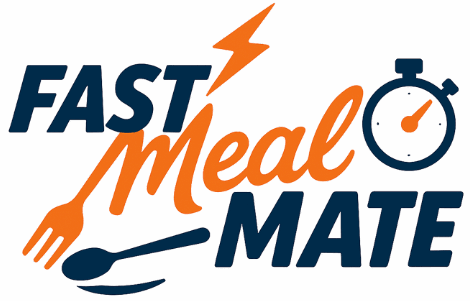
![- Canned mixed beans: I love using black beans, kidney beans, and chickpeas. They add protein and fiber to the soup. Their different textures make the soup hearty and filling. Look for low-sodium options for a healthier choice. - Fresh vegetables: Carrots and celery bring sweetness and crunch. They create a great base for the soup. I also like adding kale or spinach for color and nutrients. These greens wilt nicely and enhance the soup's flavor. - Seasoning essentials: Garlic powder, onion powder, and smoked paprika are key. They add depth and warmth to the soup. Don't forget salt and cracked black pepper to taste. These simple seasonings really bring the dish to life. - Suggestions for proteins: You can add cooked chicken or sausage for extra heartiness. If you prefer plant-based, try tofu or tempeh. These options add flavor and make the soup more filling. - Boosting nutrition: Consider adding grains like quinoa or barley. They add texture and make the soup even more nutritious. You can also toss in lentils for a protein boost. - Alternative greens: If you want to mix things up, try Swiss chard or arugula. They offer different tastes and nutrients. Experimenting with greens keeps the soup fresh and exciting. Check out the Full Recipe for all the details on making this delicious soup! Start by heating the olive oil in a medium saucepan over medium heat. You want it shimmering but not smoking. Add the diced carrots and celery. Sauté them for about three minutes. This helps release their sweet flavors. Don’t rush this step; the heat must be just right. It sets a strong base for your soup. Next, it’s time to build your soup. Stir in the mixed beans. Cook them for one more minute. This warms the beans and helps their flavor blend in. Then, pour in the vegetable broth and diced tomatoes. Season with garlic powder, onion powder, and smoked paprika. Sprinkle in salt and black pepper to taste. Bring the broth to a gentle simmer. Let it cook for about five minutes. This allows the flavors to meld beautifully. Now, fold in the chopped kale or spinach right before serving. Cook them for just one minute. This will wilt the greens without overcooking them. Finally, taste your soup. Adjust the seasoning with more salt and pepper if you like. Serve it hot, and don’t forget to garnish with fresh herbs. For the full recipe, check the provided link. Enjoy your healthy, hearty bean soup! Using pre-cooked or canned ingredients makes cooking fast. Canned mixed beans are a great choice. They save time, and you get lots of protein. Just rinse and drain them. This helps remove extra sodium. To cut cooking time further, sauté your veggies first. Carrots and celery soften quickly. Once they start to cook, add your beans. This gives them a warm flavor. Combine everything in the pot with broth and tomatoes. You’ll have a tasty soup in just ten minutes. To boost flavor, use fresh herbs like parsley or cilantro. They add a bright taste and look nice. Spices like smoked paprika and garlic powder also help. They give the soup depth. Balancing acidity is key. Use diced tomatoes for a sweet touch. You can add a splash of lemon juice too. This adds brightness without overpowering the soup. Taste as you go, and adjust seasoning to suit your liking. Explore more flavor ideas in the [Full Recipe]. {{image_4}} You can easily make a vegetarian or vegan version of Minute Hearty Bean Soup. The base of this soup is already plant-based. Just ensure you use vegetable broth. This way, the soup stays rich in flavor and nutrition. You can also add more beans or lentils for extra protein. For those needing gluten-free options, focus on your broth and ingredients. Use certified gluten-free vegetable broth. Most canned mixed beans are gluten-free, too. Check the labels to be safe. You can also use fresh or frozen vegetables, which are naturally gluten-free. To make this soup even more exciting, try adding global flavors. For a Mexican twist, add corn and chili powder. Fresh cilantro gives it a bright taste too. For Mediterranean flair, stir in some olives and use herbs like oregano and thyme. If you want an Asian twist, consider adding ginger and soy sauce. You can also toss in some bok choy or mushrooms. This fusion idea keeps the soup fun and fresh. Feel free to mix ingredients from different cuisines for a unique taste experience. For more details on how to prepare this delicious soup, check out the Full Recipe. To keep your Minute Hearty Bean Soup fresh, store it properly. When you refrigerate it, it lasts for about three to four days. Make sure to use an airtight container. This helps prevent any off-flavors and keeps it safe. If you want to save it for later, freezing is a great option. The soup will stay good for around three months in the freezer. Use freezer-safe bags or containers. Leave some space at the top, as the soup expands when it freezes. When thawing, place it in the fridge overnight for best results. Reheating your soup is easy. The best way is to use the stove. Pour the soup into a saucepan and warm it over medium heat. Stir it often to avoid sticking. This keeps the texture nice. If you’re short on time, you can use a microwave. Place the soup in a microwave-safe bowl and cover it loosely. Heat it in short bursts, stirring in between. This helps it heat evenly. Sometimes, reheated soup can lose some flavor. You can fix this! Add a splash of fresh broth or a squeeze of lemon juice. This will brighten up the taste and make it feel fresh again. For the full recipe, check the [Full Recipe]. Can I use dried beans instead of canned? Yes, you can use dried beans. Just soak them overnight and cook them first. This adds time but gives great flavor. Make sure to adjust the broth and cooking time. How can I make the soup spicier or milder? To spice it up, add crushed red pepper or cayenne. For milder soup, skip these spices. You can also balance spice with a dollop of sour cream or plain yogurt. What can I use instead of vegetable broth? You can use chicken broth for a richer taste. Water works too, but it may lack flavor. Add more spices if you use water. Alternatives to kale or spinach for greens? Swiss chard or collard greens are great options. You can also use arugula for a peppery kick. Each green brings its own unique flavor and nutrition. What to serve with hearty bean soup? Crusty bread is a perfect match. You can also pair it with a fresh salad or grilled cheese. These sides add texture and balance to the meal. Creative ways to enjoy leftovers? Try using the soup as a base for a grain bowl. Top it with cooked rice or quinoa. You can also blend it for a creamy dip or sauce. This blog post covered how to make Minute Hearty Bean Soup. We explored essential ingredients like canned beans and fresh veggies. I shared steps for crafting a rich base and enhancing flavors. You learned quick cooking tips to save time without losing taste. There are also many variations, like vegan options and global twists. In closing, this soup is easy, tasty, and very versatile. Enjoy creating your perfect bowl!](https://fastmealmate.com/wp-content/uploads/2025/06/6eb35ef4-c964-4ad2-94ab-a053d6d9dc9e-768x768.webp)
